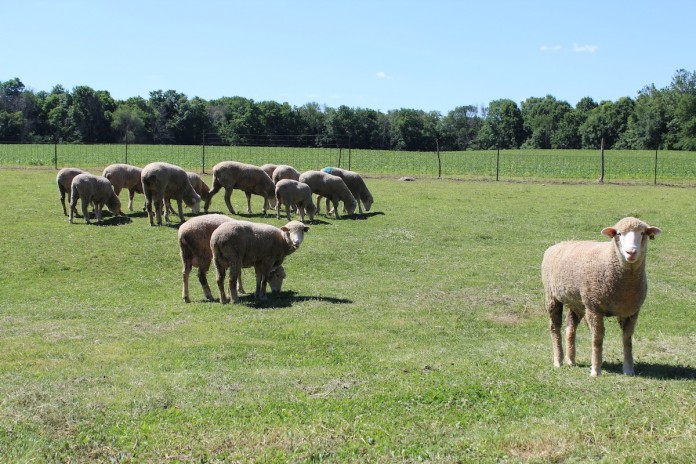Sitting on my front porch looking at my sheep and cattle in the pasture, I can’t help but think of how little time I put into just watching them just graze.
I think most of us are guilty of just checking on the animals to make sure they are healthy and not really watching them graze. How do each of the common livestock species harvest their food source?
Species
If you have ever watched a cow on a fresh piece of pasture, you would notice that she uses her tongue to get forage into her mouth. A cow’s tongue is dexterous, and cattle use it to wrap around the forage and tear it off with a quick head movement.
Sheep, on the other hand, use their lips to pull the forage into their mouths, where it is cut by the sheep’s teeth against their dental pads.
Using this method of grazing, sheep can graze closer to the ground and can be more selective in what parts of the plant they eat, preferring the leaves over the stems. Sheep will eat more of the weeds in a pasture than cattle and can be used, in some situations, to control noxious weeds.
Goats, for the most part, prefer to browse on woody plants, where they eat the young leaves and stems. Goats have very articulated upper lips and strong tongues, which they use to pull in the plant matter while avoiding spines and thorns. Because of this, goats can be used for controlling brush and other woody plants.
Horses graze in an entirely different way than cows, sheep and goats, because of their mouth structure and digestive system, as they are not ruminants. A horse’s mouth has both top and bottom front incisor teeth and therefore graze differently from the livestock previously mentioned. Horses can be very selective of the plants they eat and tend to eat very close to the ground.
Healthy grazing
How does this translate into conservation? Although all species of livestock graze in different ways, the potential for damage to pasture is very similar. All species can cause overgrazing if the management of the operation is not done in a sustainable way.
Giving the pasture plants enough time to regrow leaf area between sessions of grazing helps to keep your plants healthy and your soil in place. A healthy forage gives your livestock more to eat with each mouthful which increases the efficiency of growth of the animal.
Watch your herd or flock as they graze and see how far they travel throughout the day. Every step an animal takes uses energy. The more energy an animal uses to obtain food, the less weight the animal will gain.
A rotational grazing system reduces the need for the animal to travel long distances and increases gains in your bottom line. Rotational grazing is the best way to protect the environment, your property and your bottom line.
If you are interested in having a more efficient operation with more forage and healthier soils, contact your local soil and water conservation district or natural resources conservation service office for free technical assistance for grazing and other natural resources concerns.













